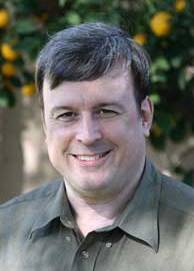Spoiler alert! Don’t read this if you haven’t watched Patrick McGoohan’s The Prisoner.
J. Michael Straczynski, of Real Ghostbusters and Babylon 5 fame, revealed the secrets of the show in a series of Twitter tweets on December 2, 2021.
https://twitter.com/straczynski/status/1466628593673392136
Okay, since so many have inquired (with some taking hostages) here’s what I figured out about the Prisoner that was confirmed by one of the key cast members. 1) Yes, it’s the same character from Danger Man, but McGoohan didn’t want to use that name because it would have meant –
— legal/contractual entanglements with another individual and he wanted to do this show clean of encumbrance. 2) His superiors asked him to run the Village program, as #1 but when he was read in, was horrified by the idea and said that it was pointless because not everyone can-
— be broken, which was the entire reason the Village was created, as a way to break anyone. But they felt that was just his opinion and weren’t about to shut it down. So he made a deal: he would resign, which would put him on the Village, radar same as other agents, with a —
— deadline to “break” him. If they failed to do so within that deadline, the program would be shut down. If they succeeded, he would agree to run the Village. To make the game more interesting, they agreed that the secret that he carried would have to be of absolutely –
— no real-world value. If it were an important life-or-death secret he would have more reason to fight. No, this had to be a secret with no value and no risk if revealed; it would be strictly an exercise in raw, naked individualism and stubborn resistance. So the secret –
— would be: why did you resign? The answer has no value because his superiors already *know* why he resigned. He would keep it not because it was dangerous but because he chose to do so as an act of free will. 3) As noted, there would be a deadline attached, they couldn’t –
— just keep him indefinitely. This is the deadline McKern’s character was racing against in Once Upon A time. This is also why they treated him differently than all of the other prisoners; if they damaged him, he would not be able to run the Village, and killing him would –
— simply prove his point, that not everyone can be broken. 4) Finally, as for the last episode, people tend to forget that Fallout happens *immediately* upon the end of Once Upon A Time, when the prisoner has been seriously drugged up with hallucinogens, and those effects –
— are still very much active when he goes into that story, affecting what he sees and how he behaves. So everything we see has to be filtered through the knowledge that the prisoner is still hallucinating. McGoohan assumed that people would be able to remember that and –
— wouldn’t be freaked out, but there’s a difference between seeing two episodes in a row in the editing room where the continuity is obvious, and seeing it with a week apart and being unable (then) to check the tape of the prior week. (So interestingly enough, those who –
— can binge the show today have a better chance of grasping that connection.) The gorilla mask present before the prisoner pulls off the mask of #1 to see himself is part just a momentary fake-out because he didn’t want to rush the point, but also a way of pointing to the –
— animalistic, beastly nature of interrogation and dehumanization…the McGoohan they wanted to run the Village. But now, having proven his point, he shuts down the Village as a failed experiment in his one and only act as #1. When he returns home and the door opens for him –
— as it did in the Village, it’s McGoohan pointing to the growing issue of surveillance that exists outside the Village, and is becoming accepted by society as an allegedly necessary evil. The Village is gone, but the world is on target to become The Village. End.


















